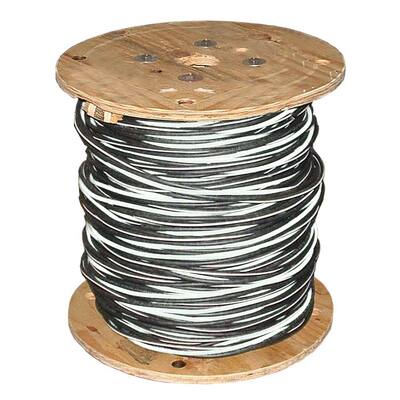jeff48356
Senior Member
- Location
- Livonia, Michigan
At the Home Depot in Knoxville, they sell two kinds of service cable, both requiring conduit. One is for 200A service, which includes two 4/0 AL for hots, and one 2/0 AL for neutral. The other kind is for 100A service, and I assume is used mainly for underground subfeeds because it includes a green conductor. But it has three #2AWG and one #4AWG green.
My question is, what type of insulation do these conductors have? (XHHW, RHW, etc)? I know it's not THWN because that's the shiny type that's found on branch circuit copper conductors.
My question is, what type of insulation do these conductors have? (XHHW, RHW, etc)? I know it's not THWN because that's the shiny type that's found on branch circuit copper conductors.


